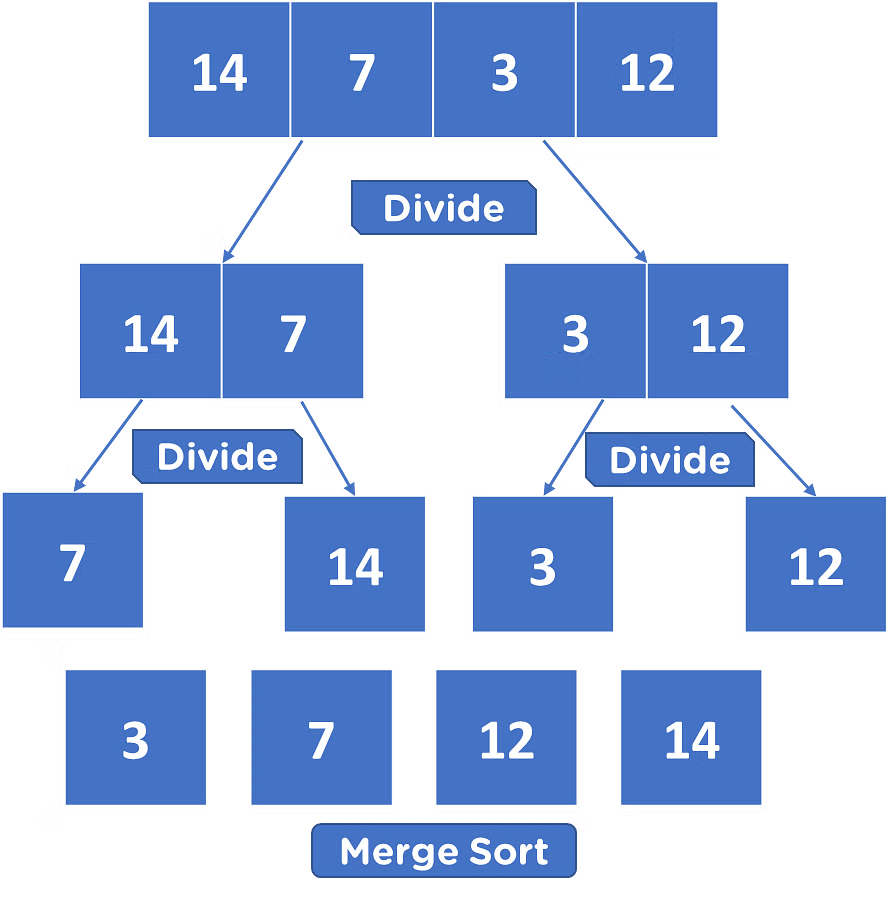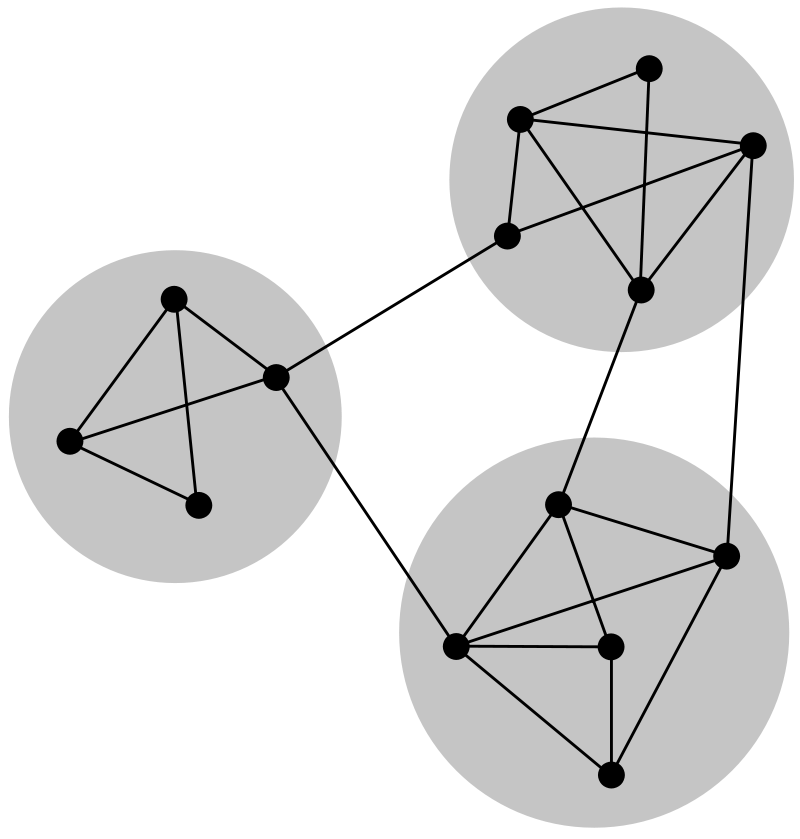In the field of software development, understanding fundamental design concepts is crucial for creating efficient, maintainable, and scalable software. This article simplifies essential design principles with examples.
Table of Contents
Divide and Conquer in Software Development
Divide and Conquer is a powerful problem solving strategy where complex problems are broken down into smaller, more manageable sub tasks. Each sub task is solved individually at an atomic level and then the sub task solutions are combined, this way, developers can efficiently tackle large and complex challenges.
For example, in sorting algorithms like Merge Sort, the array is divided into smaller subarrays, each sorted individually before being merged back together.

Cohesion
Cohesion is a fundamental concept in software development that refers to how closely related and focused the responsibilities of a single module are. High cohesion within a module means that its components are highly related and work towards a single purpose, resulting in better maintainability and understandability of the code. By ensuring that each module focuses on a single task or related set of tasks, developers can create more organized, modular, and easier to maintain codebases. This principle is essential for developing robust and scalable software applications.

Types of Cohesion
a) Functional/Module Cohesion
This occurs when functions or modules perform a specific task without side effects. For example, a function that calculates the sum of an array’s elements should only perform this calculation and nothing else.
b) Layer Cohesion
In this type, higher level layers access features of lower level layers, ensuring a one way dependency. For instance, in a web application, the presentation layer interacts with the business logic layer, which in turn interacts with the data access layer, but not vice versa.
c) Communication Cohesion
This type of cohesion happens when related code that acts on the same data is kept together. For example, a class that handles user data should include methods for adding, updating, and deleting user information, as all these operations are related to user data.
d) Sequential Cohesion
Procedures are organized in a sequence where the output of one serves as the input for the next. For example, in a data processing pipeline, raw data is first cleaned, then transformed, and finally analyzed, with each step depending on the previous one.
e) Procedural Cohesion
Steps are executed in a specific order but don’t necessarily act on the same data. For example, a method that initializes several components of an application one after another exhibits procedural cohesion.
f) Temporal Cohesion
Operations related by time are grouped together, such as opening and closing files, or try, catch, finally blocks in exception handling. For example, a method that logs a user into a system, performs some operations, and then logs the user out.
g) Utility Cohesion
Unrelated helper functions are grouped together to support the main program. For instance, utility classes that contain methods for string manipulation, date formatting, or file handling are examples of utility cohesion.
Coupling
Coupling in software development measures the degree of interdependence between different modules. Lower coupling is preferred as it indicates that changes in one module will have minimal impact on others, enhances modularity and flexibility in software development, making it easier to maintain and update codebases over time.

Types of coupling
a) Content Coupling
This occurs when one module directly modifies the data of another module. For example, if Module A directly changes the variables of Module B, they are tightly coupled through content.
b) Stamp Coupling
In this type, classes have overly specific parameters, limiting their flexibility. For instance, if a class requires specific data types as parameters, it’s tightly coupled through stamp.
c) Routine Calls Coupling
When one function frequently calls another, it results in routine calls coupling. Minimizing such calls enhances modularity and reduces dependency.
d) Type Use Coupling
Dependencies on specific data types increase coupling. Using interfaces and data classes instead of concrete types can mitigate this type of coupling.
e) Inclusion/Imports Coupling
Unnecessary imports or inclusion of modules increase dependency. Minimizing imports to essential functionalities reduces coupling.
f) External Coupling
Relying on external systems or services, like operating systems or web services, introduces external coupling, which can be challenging to manage and test.
Abstraction
Abstraction in software development involves hiding complex details from users, providing a simpler interface. This simplification process involves creating generalized versions of solutions, allowing developers to focus on core functionalities without being burdened by intricate details.
For example, in object oriented programming, abstract classes provide a blueprint for subclasses to implement specific functionality while hiding implementation details. By employing abstraction, developers can enhance code readability and maintainability, facilitating easier updates and modifications in the future.

Reusability and Reuse
Reusability in software development is the practice of writing code that can be used across different parts of a program or even in different projects. Functions like len() and print() in Python are prime examples of reusable code. Adhering to principles like high cohesion and low coupling aids in writing reusable code.
Reuse, on the other hand, means leveraging existing, well-tested code to save time and effort. This could involve using libraries, frameworks, or modules that have already been developed.

Flexibility
Flexibility in software development is crucial for ensuring that code can adapt to changing requirements without extensive rework or disruption. Achieving flexibility involves reducing coupling, increasing cohesion, and using abstraction.
For example, imagine a web application that initially only supports English language users. However, as the user base expands globally, there’s a need to add support for multiple languages. Flexible code allows developers to easily integrate language localization features without needing to rewrite large portions of the application.

Obsolescence
In software development, avoiding dependencies that may become obsolete is important for long-term sustainability. For example, consider a web development project that relies heavily on some third-party JavaScript library for UI components. If the library’s development stagnates over time, the application may become vulnerable to security risks or compatibility issues with newer browser versions.
To mitigate the risk of obsolescence, developers should prioritize using libraries and frameworks with strong community support, active development and avoid those that seem niche or lack proper documentation. For example, opting for open source projects backed by vibrant communities or companies ensures regular updates, maintenance and continuous improvement.

Portability
In software development, portability refers to the ability of code to run seamlessly across different environments without requiring modifications. For instance, a web application developed using HTML, CSS, and JavaScript can be accessed on various web browsers and operating systems without any alterations. Similarly, a Python script that utilizes standard libraries can execute on different operating systems, such as Windows, macOS, and Linux, without compatibility issues.
By avoiding reliance on environment-specific features and leveraging standard libraries, developers ensure that their codebase remains portable and can be effortlessly migrated across platforms. This approach not only enhances the accessibility of software but also simplifies maintenance and deployment processes, ultimately contributing to a smoother and more efficient development experience.

Testability
In software development, ensuring testability is very important for maintaining code quality and reliability. By writing code that is easy to test, developers can streamline the testing process and identify potential bugs or issues early on. Practices such as writing modular and decoupled code enhances the ease of testing, as each component can be tested independently for functionality and correctness. Utilizing dependency injection patterns further promotes testability by enabling the substitution of dependencies with mock objects during testing, ensuring that code behaves predictably under different conditions.
For example, a web application built with clear and modular components allows automated testing frameworks to interact seamlessly with the codebase, facilitating comprehensive testing of individual units as well as integrated functionalities.
Overall, prioritizing testability in software development leads to more robust and maintainable codebases, ultimately enhancing the overall quality of the software product.

Defensibility
In software development, prioritizing defensibility is crucial for building robust and secure applications that can withstand potential misuse or attacks. Defensive coding practices involve validating user inputs, handling errors gracefully, authentication, secure communication, and anticipating possible failures to prevent vulnerabilities and mitigate risks and helps safeguard against malicious input or unexpected behavior, ensuring the integrity and stability of the software system.
By adopting a defensive mindset and assuming that users might attempt to exploit vulnerabilities, developers can proactively design and implement defensive measures to fortify their applications against potential threats, enhancing the security and reliability of the software, ultimately safeguarding sensitive data and protecting against cyber threats.

Conclusion
In conclusion, while these concepts provide a solid foundation for understanding key aspects of software development, it’s essential to acknowledge that they are not an exhaustive list of all considerations. By understanding these main ideas, developers can navigate complex challenges more effectively, build resilient and adaptable software systems, and continue to explore and apply additional concepts to further enhance their skills and expertise in software development.